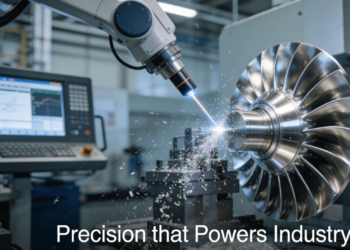Extending the service life of a semi trailer is not based on luck. It depends on informed planning, practical upgrades, and consistent care routines. In a highly competitive market where tight margins and demanding delivery schedules are the norm, gaining additional years of use from each semi trailer can significantly reduce operational expenses and enhance long-term value.
A semi trailer manufacturer such as Rhinotrail, widely recognized for trailer durability, reinforces the idea that longevity starts with a quality build and continues with every mile through disciplined upkeep. Whether managing a regional fleet or a large-scale logistics network, using structured maintenance practices results in greater efficiency and fewer premature replacements.
Minor Repairs Prevent Major Setbacks
Overlooking minor signs of wear can lead to major consequences. A small crack in a reflector, an air line leak, or uneven tire tread may appear unimportant at first but can quickly evolve into costly problems if left unaddressed. These seemingly minor faults often create chain reactions that affect overall trailer safety and performance.
A maintenance-first culture helps reduce these risks. Each semi trailer should undergo regular inspections that include tire pressure, brake pads, suspension components, and lighting systems. Environments that expose trailers to frequent stopping, rough terrain, or corrosive conditions demand an even stricter inspection schedule. Routine maintenance helps eliminate surprises and extends functional lifespan.
Creating a detailed checklist for weekly assessments can improve trailer outcomes significantly. Checking for undercarriage corrosion, loose fasteners, connection point wear, and interior flooring damage allows maintenance teams to stay ahead of problems rather than reacting after failures occur.
Uncovering Issues That Don’t Appear on the Surface
Some issues develop internally and cannot be spotted through visual inspection alone. Hidden problems such as axle misalignment, electrical degradation, or failing brake sensors may not be detected during a standard walkaround but can negatively impact trailer performance and safety.
Using diagnostic systems helps address this challenge. Onboard monitoring technology and shop-based scans can detect developing issues with brake function, voltage irregularities, or air pressure inconsistencies. These systems provide early indicators, allowing service teams to plan repairs before trailers become unreliable or unsafe.
Incorporating digital diagnostics into the maintenance schedule improves overall fleet performance. The trailers that maintain long-term reliability are often those evaluated through both traditional inspections and advanced monitoring tools.
Material Choices That Withstand the Demands of the Road
The construction quality of a semi trailer directly influences how long it will last. Material strength, structural design, and component finish all affect durability under repeated use.
A dependable semi trailer manufacturer uses high-strength steel, treated aluminum alloys, and anti-corrosion finishes to reduce the impact of constant road exposure. The use of galvanized fasteners, reinforced crossmembers, and UV-resistant panels helps prevent early wear and extend service life.
Design elements also contribute to durability. Stress-prone areas such as landing gear, rear corners, and loading entry points often benefit from added bracing or double-welded seams. These enhancements reduce the risk of frame cracking and body flex during demanding operations. Trailers that are built with long-term performance in mind provide better results for operators focused on minimizing downtime.
Upgrades That Pay Off in Reduced Damage
Upgrades that support trailer longevity are not limited to visual enhancements. Many are designed specifically to reduce wear and protect essential components over time. For example, poly or metal fenders prevent road debris from damaging undercarriage parts. Air ride suspension systems help absorb shocks and reduce stress on cargo and chassis. LED lighting provides consistent illumination with less electrical strain and lower failure rates. Flooring made from high-impact materials handles heavier loads and minimizes structural fatigue.
Additional enhancements such as greaseless bushings or sealed wiring connections further reduce the need for ongoing repairs. These add-ons protect trailers from environmental damage, mechanical wear, and frequent contact stress. As a result, trailers equipped with smart upgrades often remain in better condition, attract higher resale values, and experience fewer maintenance interruptions.
The Human Factor: Operators Make a Lasting Impact
A semi trailer’s lifespan is also influenced by how it is operated. Driver behavior, loading practices, and inspection habits can either preserve equipment or accelerate its decline. Improper cargo distribution, sudden braking, or failure to report wear indicators all contribute to unnecessary stress on a trailer.
Promoting proper operator behavior through training and communication helps prevent this kind of avoidable damage. Encouraging drivers to perform consistent pre-trip inspections, document issues quickly, and follow proper loading procedures leads to better outcomes. Maintenance teams benefit from having early insight into developing problems rather than waiting for breakdowns.
Many fleets implement standardized communication tools such as mobile inspection checklists and easy-reporting platforms to facilitate faster issue tracking. A consistent feedback loop between operators and fleet managers can reduce errors and extend trailer usability across thousands of miles.
Performance and Durability Can Work Together
It is not necessary to trade off performance for longevity. With a proactive maintenance strategy, durable build materials, and attentive use, a semi trailer can deliver strong results over a long service period. There is no need to accept lower standards of reliability to keep equipment in rotation.
Semi trailers represent one of the most important long-term investments for logistics operators. Replacement costs, repair labor, and lost operational time add up quickly if trailer lifespans are cut short. With the support of an experienced semi trailer manufacturer, fleets can implement strategies that balance performance and durability without compromise.
Choosing materials and upgrades wisely, maintaining inspection discipline, and supporting informed driver behavior are all practical methods that extend equipment lifespan while maintaining strong delivery capabilities.
Long-Term Value Starts with Smart Decisions
Managing a fleet of semi trailers efficiently begins with the right design choices and continues through every inspection and repair. Regular care, thoughtful upgrades, and dependable driver habits work together to reduce risk and improve financial outcomes.
In today’s transport environment, extending the life of a semi trailer offers both a competitive and financial advantage. Rhinotrail, a trusted semi trailer manufacturer, emphasizes that long-term value is not the result of shortcuts, but of strategic decisions made consistently across a fleet’s lifecycle. With reliable equipment and proven practices in place, businesses can confidently stretch the useful life of their semi trailers without compromising performance or safety.











































































